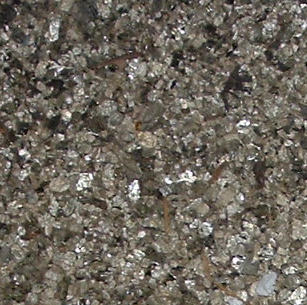According to the EPA, Some residential vermiculite insulation may contain asbestos.
What is Asbestos?
Asbestos is a mineral fiber. Asbestos fibers are long, thin, and very strong, yet flexible enough to be woven together. Until the 1970's, asbestos was commonly added to a variety of building materials to strengthen them, provide heat insulation and make them fire resistant. Although most products today do not contain asbestos, some older materials in your home may, including pipe and sprayed-on insulation, furnace ducts, floor tiles, and roofing and siding materials.
What is Vermiculite?
Vermiculite is a naturally occurring mineral used in construction, insulation and gardening products. It looks like shiny, small pieces of popcorn, and is usually light-brown or gold in color. Until the mine was closed in 1990, Vermiculite came from mines in Libby, Montana as well as other mines in the U.S. and other countries. Vermiculite is still mined and distributed for a number of uses, including insulation.
Why should I be concerned about vermiculite insulation?
Much of the Libby vermiculite was used as attic insulation. It was sold under the product name Zonolite. The Environmental Protection Agency (EPA) estimated in 1985 that 940,000 American homes contained Zonolite attic insulation.
There is some confusion about the possibility of asbestos in vermiculite insulation. For more information you can look at the attic insulation report from the Schundler company.
Approximately 80% of vermiculite ore mined worldwide came from the Libby, Montana mine from 1924 to 1990. The ore from this mine also included a natural deposit of amphibole/tremolite asbestos. Much of the vermiculite from Libby was contaminated with asbestos. Asbestos fibers are invisible to the eye and can only be professionally detected. Homeowners should consider the following:
Vermiculite used for residential insulation may contain asbestos.If you are unsure whether the insulation in your home contains vermiculite, avoid disturbing it until either you or a professional can confirm that it is vermiculite.Vermiculite mined today for use in insulation is from a source considered to be free of asbestos contamination.
What might vermiculite insulation in my home look like?
 Vermiculite is ideal for attic insulation because of it's properties as a lightweight, fire-resistant, absorbent and odorless material. Vermiculite in insulation is a pebble-like, blown-in product and is usually light-brown or gold in color. Sizes of vermiculite products range from very fine particles to large (coarse) pieces nearly an inch long.
Vermiculite is ideal for attic insulation because of it's properties as a lightweight, fire-resistant, absorbent and odorless material. Vermiculite in insulation is a pebble-like, blown-in product and is usually light-brown or gold in color. Sizes of vermiculite products range from very fine particles to large (coarse) pieces nearly an inch long.
If you have vermiculite insulation in your attic, you should assume that the material may contain asbestos. Testing vermiculite insulation for asbestos is not necessary but samples can be taken and submitted to a certified laboratory for testing. Vermiculite sold under the name Zonolite originated in Libby, Montana, and should be assumed to contain asbestos.
If I find vermiculite insulation in my home, should it be removed?
Homeowners may wish to consider the following points:
- Due to the physical characteristics of vermiculite and where it may be installed, the potential for contamination of the air throughout your home may be low.
- If the insulation will not be disturbed and is not contaminating the home environment (e.g. it's sealed behind tight walls, floors, or isolated in an unfinished attic, which is vented outside) it may be best to leave it alone.
- If home renovations involve removal of walls or other areas where vermiculite insulation is located, extra precaution is necessary and removal by a trained and certified professional prior to renovation may be warranted.
What can I do to prevent asbestos exposure?
The following steps can help minimize asbestos exposure during very minor home renovations (such as installing a ceiling light, bathroom fan, or computer cable):
- Wear gloves, eye protection and a HEPA respirator (not just a dust mask).
- Tape off rooms with plastic sheeting to prevent contaminating other areas of the home;
- Keep the vermiculite damp to prevent spreading dust.
- Keep windows open for good ventilation and wipe up all dust and debris using wet cleaning methods (wet-wiping and wet-mopping).
Those at highest risk for exposure and disease are long-term vermiculite processing plant employees or workers regularly installing or handling products containing asbestos without proper protection. Those at lower risk include people who occasionally disturb attic insulation during activity in the attic or minor "handyman" jobs. The lowest risk would be for people who live in a home where the vermiculite insulation is isolated and they have had no direct contact with the materials.


